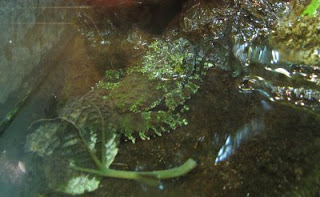Juan Carlos, one of my labmates, sent out a link to
this bryology blog written in Spanish. It has been online since January 2008, but I was unaware of it. I read some Spanish, but a majority of the bryology literature that I read is in English.
The aim of the blog is to share news of interest about bryology, bryologists and their research with the international community. Anyone who wishes can contribute to this blog. There are instructions for adding a post on the website.
There are several nice features in the sidebar on the right that. There is a list of bryology articles that have been published recently in scientific journals. There are also links to some of the top bryology journals in the field, so that you can browse through to see the tables of contents. You may not be able to access the full articles from home, but if you are at a university then you would probably have access. Finally there are a number of links to information pages about Latin American bryophytes. I think that it is a very nice website, but the posting is a little infrequent. So if you have anything to say about bryophytes, in Spanish, or about Latin American bryophytes, this would be the place to share it.








